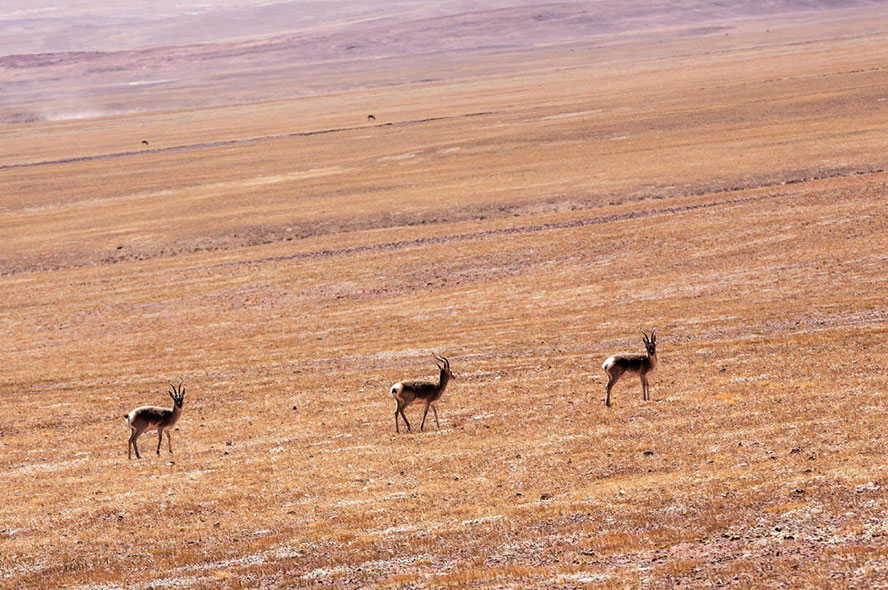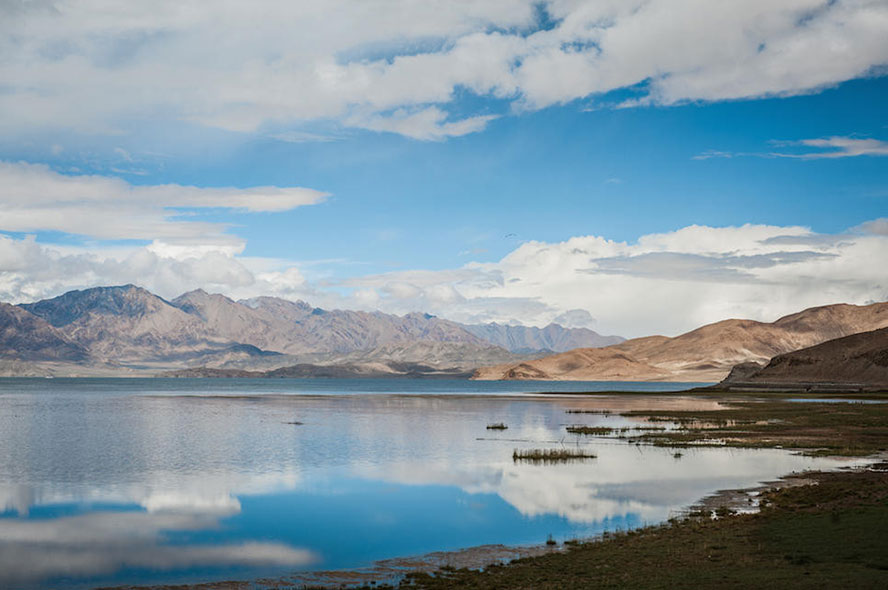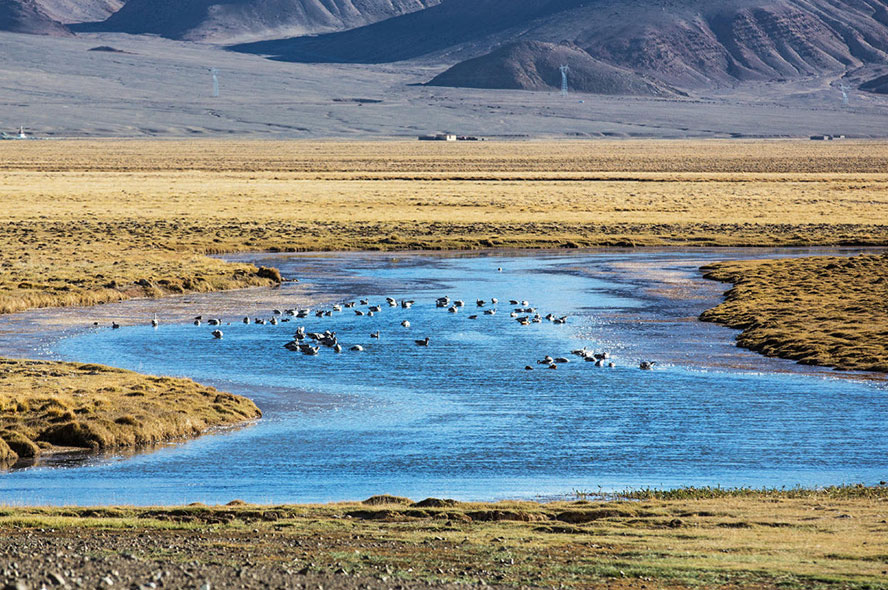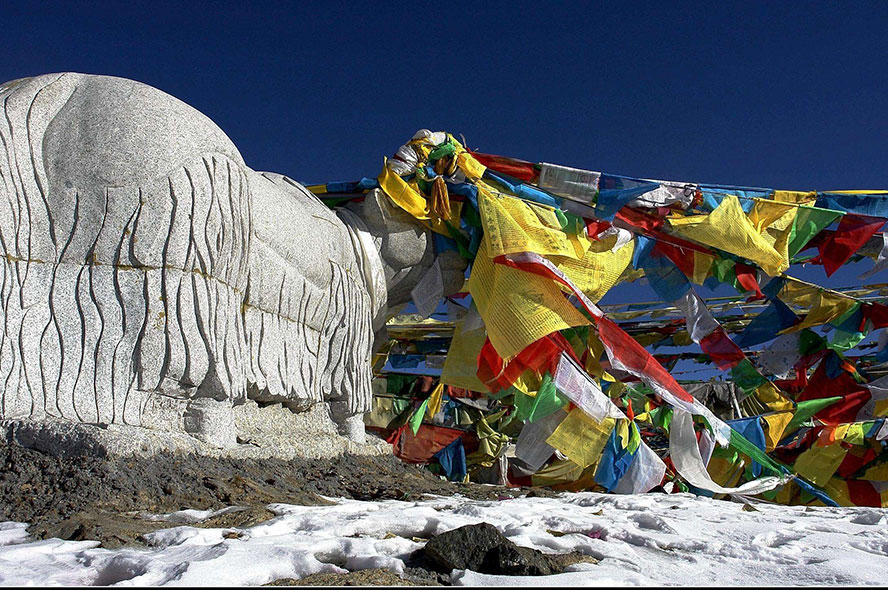There are many Tibetan Buddhist temples in Tibet, and Drepung Monastery is just one of them, but it is one of the must-see temples in Tibet because it is one of the three major temples in Lhasa. In order to adapt to the high altitude, tourists from all over the world will normally stay in Lhasa for about three days after they arrive there, during which they can pay a visit to the Drepung Monastery in the suburb.
Basic introduction to the Drepung Monastery
Drepung Monastery is a temple of the Gelug Sect of Tibetan Buddhism as well as one of the three major temples in Lhasa, together with Ganden Monastery and Sera Monastery.
- Altitude: 3800 meters
- Location: at the foot of Mt. Gephel in the western suburb of Lhasa
- Distance from Potala Palace: about 9 km
- Distance from Jokhang Temple: about 10 km
The gate of Drepung Monastery is right at the foot of the mountain, but the buildings of the temple are all on the mountainside. Therefore, you need to climb a small hillside before visiting the Drepung Monastery.
If you go to Lhasa by train, you will see a large patch of white buildings on the mountainside which is opposite to the Lhasa River when you come out of the train station. The white buildings looked like huge rice heaps are the architectures of Drepung Monastery. The temple has a construction area of about 200,000 square meters. If you look it from a far distance, you will find the temple looks like a beautiful mountain city.
Introduction to the building complex of Drepung Monastery
Drepung Monastery is embraced on three sides by green hills and there is a slope on the southside, covered with trees and shrubs. In front of the slope are the Lhasa River and flat grounds. The entire temple is built on the mountainside, magnificent and large in scale.
The temple mainly consists of the Coqen Hall, four Buddhist colleges, Ganden Potrang (a sumptuous palace) and 29 Kamcuns (villages lived by monks). Most of the buildings were built in the Ming and Qing Dynasties. They seem to be cluttered and disordered, but on the contrary, these buildings are connected to each other and form into a complete system.
History of Drepung Monastery
Drepung Monastery was built in 1416 by Jamyang Chojey, a disciple of Tsongkhapa. In the beginning, Drepung Monastery was small in size, having only seven monks and a small hall which is a dozen square meters. In the first half of the 17th century, the 5th Dalai Lama expanded the temple by building seven Buddhist colleges in it. After generations of expansion, buildings of the temple have now fully covered the mountainside of Mt. Gephel, with the Coqen Hall, four Buddhist colleges, Ganden Potrang, and about 50 Kamcuns as its main buildings.
Highlights of Drepung Monastery
Drepung Monastery is situated on the mountainside of Mt. Gephel, with a distance of about 10 km from the western suburb of Lhasa. People need to climb the mountain before visiting the temple and because of knowing very little about Tibetan Buddhism, those who go to Tibet themselves will normally ignore the three major temples in Lhasa. While for those choose to join a tour group from a travel agency, it is impossibly for them to miss the Sera Monastery and Drepung Monastery, because these two temples are generally included in the itinerary. While visiting the temple, our tour guide will tell you the story of this temple, so that you will feel less tired while climbing the mountain. Now let's take a look at the worth-visiting places in Drepung Monastery.
Architectural features of Drepung Monastery
You will find both retro and modern elements from the buildings in Drepung Monastery. The roads in the temple are rough, and the buildings were not built at the same horizontal level. The walls in red, white and yellow are not as smooth as the walls of today’s buildings. With the blue sky and pure clouds as the background, the flowers by the windows of the buildings are extraordinarily beautiful.
Covering a wide area and having a large number of buildings, Drepung Monastery is the largest temple in Tibet as well as a representative of traditional Tibetan Buddhist architecture. It takes half a day to walk through every corner of the temple. To save your time, our tour guide will take you to the most worth-visiting places of Drepung Monastery.
Buddha statues enshrined in the halls of Drepung Monastery Coqen Hall is the center of Drepung Monastery as well as the most remarkable building of this temple. Coqen Hall is to Drepung Monastery what the Shakya ManiHall is to Shaolin Temple. Two magnificent, colorful and exquisite Buddha statues are enshrined in the Coqen Hall: One is the statue of White Parasol (a protector against supernatural danger in Buddhism), and the other is the statue of the 9-year-old Amitayus (“Infinite Life”) Buddha.
Main Buddha statues in the Shakyamuni Hall include the statue of Sakyamuni and statues of his two disciples, Sāriputta and Moggallāna. The higher consecrated table behind enshrines the statue of Dīpankara (the Buddha of the past, named “Lamp bearer”), the statue of Sakyamuni (the Buddha of present), and the statue of the 8-year-old Maitreya (the Buddha of future).
According to scriptures, about 5.67 billion years after the death of Sakyamuni, the Future Buddha - Maitreya will appear on Earth to achieve complete enlightenment and teach the pure dharma.
The large Drepung Monastery enshrines many Buddha statues. If you just have a simple look at them, you might not be able to get the meaning of them. And even with the explanation of the tour guide, you could only know a little about these Buddhas.
Unfurling of giant Buddha tapestry in Shoton Festival
Drepung Monastery is the birthplace of Shoton Festival. According to the regulations, all the monks should stay in the temple and shouldn’t go outside casually from June 15th to June 30th of the Tibetan lunar calendar, so that they won’t accidently trample the newly-born larvae to death. During this period, those who come to the temple will donate some yogurt to the monks to express their wishes. At the time when the 5th Dalai Lama were in charge of Drepung Monastery, many Tibetan opera troupes came here to perform for the monks. And gradually, a festival when people would donate yogurt and give performance to monks was formed.
Drepung Shoton Festival falls on June 30th of the Tibetan lunar calendar. On this day, a giant Buddha tapestry with 30 meters long and 20 meters wide will be hung on the mountainside of Mt. Gephel. This is the opening ceremony of Shoton Festival. Then various of performances and activities will be held in Ganden Potrang, during which a succession ceremony will also be performed. At that time, Drepung Monastery will be crowded with people. This is also one of the grandest events in Lhasa in summer.
From the perspective of solar calendar, the Drepung Shoton Festival takes place in July, which is among the peak season of Tibet tourist. Therefore, the festival would attract thousands of tourists every year, and festival atmosphere in the temple is extremely strong. As a result, summer has also become the peak season of Drepung Monastery. If you prefer a less crowded Drepung Monastery, you can go there in winter.







































 Data in submission...
Data in submission...